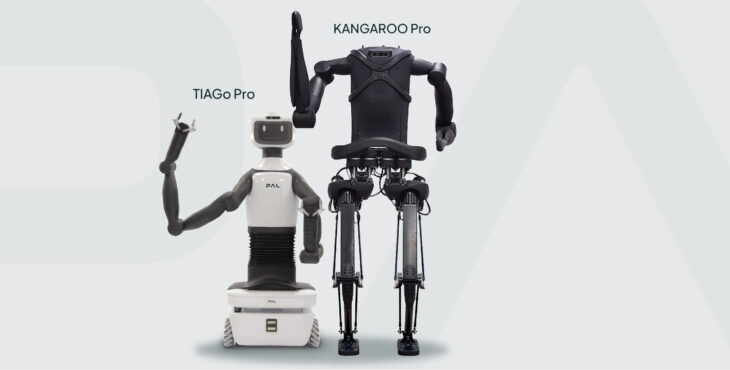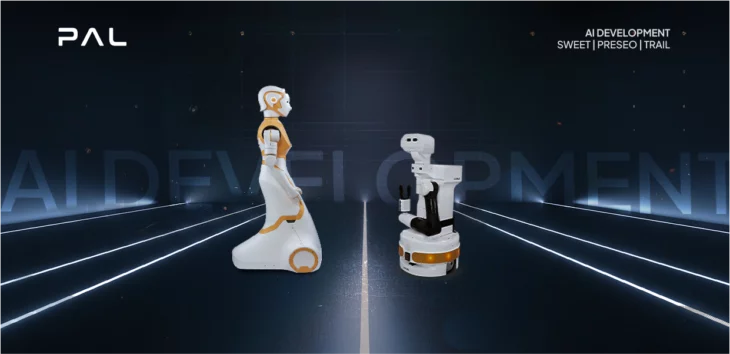As the EU funded project SPRING reaches the end, we, at PAL Robotics, are proud to reflect on our participation in this innovative and impactful initiative. The SPRING (Socially Pertinent Robots in Gerontological Healthcare) project aimed to develop socially assistive robots to support healthcare professionals and enhance the patient experience, particularly focusing on elderly care in hospital settings. Through our contributions, we delivered seven ARI robots, as well as key software components, which played crucial roles in various hospital tasks. Here’s a look back at our journey, achievements, and the valuable lessons we’ve learned.
The Goal of the SPRING Project
The primary objective of the SPRING project was to create robotic solutions capable of providing social assistance in healthcare environments, particularly in geriatric care. With the aging population in Europe, there is an increasing demand for innovative solutions like assistive robots in healthcare systems. The SPRING project sought to address this need by developing robots that could interact naturally with patients and staff, assisting with both medical and non-medical tasks, and ultimately improving the overall healthcare experience for both patients and staff.
PAL Robotics’ Role in the Project
At PAL Robotics, our key role was in the design, development, and deployment of the ARI robots within the SPRING framework, as well as the overall design of their software architecture. We were responsible for creating and delivering seven robots equipped with advanced capabilities to navigate hospital environments and engage in meaningful interactions with patients and staff. Our ARI robots were designed to be versatile, capable of performing a range of tasks from welcoming visitors to providing entertainment and assisting patients throughout their care process.
Delivering seven fully functional ARI robots was a significant milestone for us. Each robot was meticulously designed to meet the specific needs of the hospital environment, becoming a testament to the potential of assistive robots in healthcare. The ARI robots were equipped with state-of-the-art features such as 3D face and body tracking, speech processing, and dialogue management. These capabilities enabled the robots to understand and respond to various social cues, making their interactions more natural and effective.
We were also in charge of coordinating the design and implementation of the SPRING software architecture. More than 50 software modules are running in parallel on the robot at any time, in order to provide all the expected functionalities. These modules were created by the partners of the project, and PAL Robotics ensured that they all ‘clicked’ together, contributing key innovations like the ROS4HRI framework – Our ROS4HRI became in the process an international standard for robots to represent and reason about humans.
Use Cases of ARI Robots in Hospitals
Within the SPRING project, five main use cases were developed to demonstrate the potential of socially assistive robots in hospitals:
- Reception and Welcoming: The ARI robots were stationed at hospital entrances to greet and provide initial assistance to visitors, helping them navigate the hospital premises.
- Information and Reminders: The robots delivered important information and reminders about safe social interactions, especially crucial during the COVID-19 pandemic.
- Assistance Throughout the Care Process: ARI robots provided assistance to patients, such as guiding them to their appointments and providing support during the waiting periods.
- Orientation and Guidance: The robots helped patients and visitors find their way around the hospital, reducing the burden on hospital staff.
- Entertainment: To improve the hospital experience, ARI robots engaged with patients through entertainment activities, helping to reduce stress and improve mood.
The Final Review meeting
At the SPRING project’s final review meeting, which took place in Paris with all the project partners, the results were met with a lot of excitement. Everyone was especially happy with the performance of the ARI robots. One key achievement highlighted during the meeting was the creation of a new open-source module for Human-Robot Interaction (HRI) and now available for everyone to use.
The ARI robots were successfully tested with over 100 patients, showing how well they can interact with elderly patients and support healthcare staff. This, combined with the new HRI software, showed just how valuable these robots are in a hospital setting and how much progress the SPRING project has made in healthcare robotics.

Key Takeaways from the SPRING Project
Deploying ARI robots in a real hospital setting, particularly in the Broca Hospital in Paris, which specializes in clinical gerontology, provided invaluable insights. Interacting with elderly patients presented unique challenges that helped us refine our technology. The success of these deployments highlighted the potential of socially assistive robots to improve patient care and support healthcare professionals by taking over routine tasks, allowing them to focus on more complex medical duties.
Given the aging population and the increasing strain on healthcare systems, the adoption of robotic solutions like ARI is becoming essential. Our experience with the SPRING project demonstrated that robots could play a significant role in safeguarding the EU healthcare system, enhancing efficiency, and improving patient outcomes.
Collaboration and Contributions
The success of the SPRING project was a collective effort, thanks to our consortium partners: Institut National de Recherche en Informatique et en Automatique (INRIA), Università degli Studi di Trento, České vysoké učení technické v Praze (CVUT), Heriot-Watt University, Bar-Ilan University, ERM Automatismes Industriels, and Assistance Publique – Hôpitaux de Paris (AP-HP). Each partner brought unique expertise and contributions, ensuring the project’s success.
Future Directions
The knowledge and experience gained from the SPRING project will significantly influence our future developments at PAL Robotics. Our continued focus will be on enhancing human-robot interaction (HRI) capabilities, ensuring our robots can operate seamlessly in complex social environments.
In conclusion, the SPRING project has been an enlightening journey that underscored the transformative potential of socially assistive robots in healthcare. As we move forward, PAL Robotics is committed to leveraging these insights to innovate and deliver robotic solutions that meet the evolving needs of healthcare systems worldwide. We are excited about the future and look forward to contributing further to the advancement of healthcare robotics.
At PAL Robotics we are partners in collaborative projects in healthcare and Ambient Assisted Living, as well as areas such as agri-food, smart cities, factories of the future, Artificial Intelligence, and Industry 4.0 and 5.0. For more information about PAL Robotics and our involvement in other collaborative projects, visit our website and if you have any questions, make sure you get in touch with us.
- ARI
- EU project
- Healthcare
- Research


